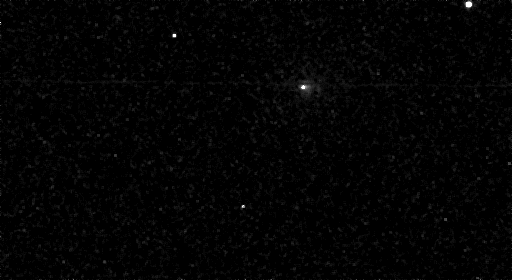Key Developments
- The latest image of 3I/ATLAS shows an unusually bright, compact nucleus with a faint diffuse halo — characteristics unlike any previous interstellar object.
- Unlike 2019’s Borisov comet or 2017’s Oumuamua, 3I/ATLAS appears larger, faster, and structurally stable despite its extreme velocity.
- Astronomers caution that gravitational and magnetic forces could still alter its trajectory — a potential concern if redirected toward the inner solar system.
USA HERALD – The newly released image of 3I/ATLAS, captured by the ExoMars Trace Gas Orbiter, has reignited global fascination with what may be the most mysterious interstellar object ever observed. Appearing as a faint yet defined pixelated image moving steadily across the field of stars, the object displays a level of luminous stability and density unseen in prior interstellar detections.
Whereas ʻOumuamua puzzled scientists with its pancake-like shape and non-gravitational acceleration, and Borisovbehaved like a hyperactive comet, 3I/ATLAS presents a hybrid profile — fast-moving like a comet, yet tightly composed like an asteroid. Current models estimate it to be massively larger than Borisov and traveling at speeds exceeding 139,000 miles per hour, a record-breaking pace for a deep-space visitor.
Astrophysicists have charted 3I/ATLAS’s course with remarkable precision since its detection in July. So far, the object’s trajectory has followed predictable Newtonian mechanics, passing near Mars and continuing toward the outer solar system.
However, as astrophysicist Avi Loeb noted in recent analyses, “space is not a vacuum of certainty.” Even the smallest gravitational nudge—from Jupiter, solar radiation, or an uncharted magnetic field—could alter 3I/ATLAS’s course. Such a deviation could theoretically bring it closer to Earth’s orbital path, although current data suggests no immediate danger.
Still, scientists emphasize that the forces acting upon interstellar travelers remain largely unpredictable. A change in vector could either propel 3I/ATLAS harmlessly out of the solar system — or send it into a more complex gravitational dance among the inner planets.
What truly sets 3I/ATLAS apart is its optical and thermal behavior. The Trace Gas Orbiter’s image shows a compact reflective body surrounded by a soft, diffuse glow — suggesting either a frozen gas sheath or a highly reflective mineral crust.
Other anomalies include:



